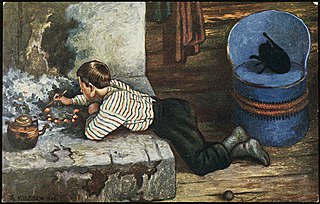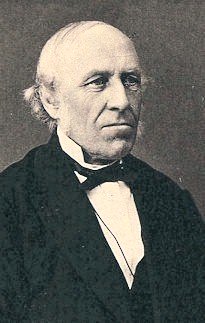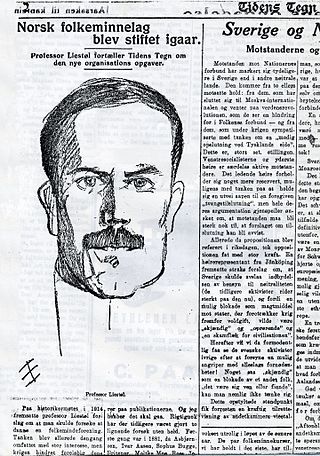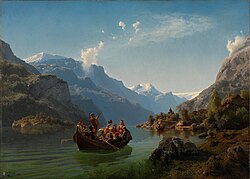
Ivo Caprino was a Norwegian film director and writer, best known for his puppet films. His most noted film, Flåklypa Grand Prix, was made in 1975.

Hole is a municipality in Buskerud county, Norway. It is part of the traditional region of Ringerike. The administrative centre of the municipality is the village of Vik. Hole is located around lake Tyrifjorden and extends to the woodland around Oslo. The soil is fertile and suited to growing fruit, berries and other agricultural products.

Krødsherad is a municipality in Buskerud county, Norway. The administrative centre of the municipality is the village of Noresund. The municipality of Krødsherad was established when it was separated from the municipality of Sigdal on 1 January 1901.

Bunad is a Norwegian umbrella term. In a broader sense, the term encompasses household, householding equipment, and livestock as well as both traditional rural clothes and modern 20th-century folk costumes. In its narrowest sense, the word bunad refers only to clothes designed in the early 20th century that are loosely based on traditional costumes.

Jørgen Engebretsen Moe was a Norwegian folklorist, bishop, poet, and author. He is best known for the Norske Folkeeventyr, a collection of Norwegian folk tales which he edited in collaboration with Peter Christen Asbjørnsen. He also served as the Bishop of the Diocese of Kristianssand from 1874 until his death in 1882.

Peter Christen Asbjørnsen was a Norwegian writer and scholar. He and Jørgen Engebretsen Moe were collectors of Norwegian folklore. They were so closely united in their lives' work that their folk tale collections are commonly mentioned only as "Asbjørnsen and Moe".

The culture of Norway is closely linked to the country's history and geography. The unique Norwegian farm culture, sustained to this day, has resulted not only from scarce resources and a harsh climate but also from ancient property laws. In the 19th century, it brought about a strong romantic nationalistic movement, which is still visible in the Norwegian language and media. In the 19th century, Norwegian culture blossomed as efforts continued to achieve an independent identity in the areas of literature, art and music. This continues today in the performing arts and as a result of government support for exhibitions, cultural projects and artwork.

Ashlad is a main character in a number of tales collected in Asbjørnsen and Moe's Norwegian Folktales.

Norwegian Folktales is a collection of Norwegian folktales and legends by Peter Christen Asbjørnsen and Jørgen Moe. It is also known as Asbjørnsen and Moe, after the collectors.
Olea Crøger was a Norwegian music teacher who was a pioneer in the collection of folk music and folklore. She is considered to have been one of the first to systematically collect folk songs and melodies in Telemark.

Adolph Tidemand was a noted Norwegian romantic nationalism painter. Among his best known paintings are Haugianerne and Brudeferd i Hardanger, painted in collaboration with Hans Gude.
"About Ash Lad, Who Stole the Troll's Silver Ducks, Coverlet, and Golden Harp" is a Norwegian folktale collected by Peter Christen Asbjørnsen and Jørgen Moe in Norwegian Folktales, translated as "Boots and the Troll" by George Webbe Dasent in 1859.

Gertrude's Bird (Gjertrudsfuglen) is a Norwegian fairy tale collected by Peter Christen Asbjørnsen and Jørgen Moe in their Norske Folkeeventyr. The adventure is part of Asbjørnsen and Moe's collection of Norwegian Folk Tales, which was first published in the period 1841-1844. Of a total of 22 known legends in Norway Gjertrudsfuglen is the most prevalent. The adventure should be known in 39 variants.

Ludvig Mathias Lindeman was a Norwegian composer and organist. He is most noted for compiling Norwegian folk music in his work Ældre og nyere norske Fjeldmelodier.
St. John's Eve, is a play written by Henrik Ibsen and first performed in 1853. The play is considered apocryphal, because it never entered Ibsen's collected works. It was poorly received at its premiere at Den Nationale Scene in Bergen in 1853.

Gerhard August Schneider was a Norwegian artist and illustrator of folk tales.

Moltke Moe was a Norwegian folklorist.

Christen Henriksen Pram was a Norwegian/Danish economist, civil servant, poet, novelist, playwright, diarist and magazine editor. He is held as the first Norwegian novelist, although his writing was carried out in the Danish language.

Norsk folkeminnelag (NFL) [= Norwegian Folklore Society] founded in 1920, is a voluntary, non-profit cultural organization communicating and disseminating traditional folk poetry and customs. Society protects collected materials through book releases, guides collectors, and own research in the field of folklore. From 1922 to 2012, the company has published 166 book titles, as well as a reprint of Magnus Brostrup Landstads Norske Folkeviser from 1852, besides cassettes and CDs with original recorded Folk Songs.

The battleships Asbjørnsen and Moe were two fictitious ships that raised concern in the Swedish intelligence services at the time of the dissolution of the union between Norway and Sweden in 1905.


















